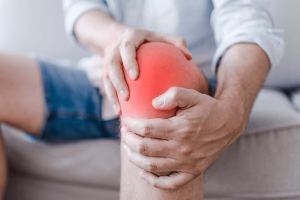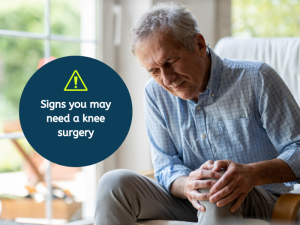Our knee joint is where the femur and tibia meets. This unique combination allows a wide range of motion for the knee under undisturbed conditions. However due to certain complications such as injuries, the surface of the knee joint is damaged and mobility is hindered as a result. There are basically 3 kinds of arthritis affecting the knee: Osteoarthritis, Rheumatoid Arthritis and Post-trauma Arthritis. In this article, we will be looking at the causes and symptoms of knee arthritis.
Causes
We must first understand the differences between the 3 kinds of knee arthritis. Osteoarthritis is the most common form of knee arthritis and is a degenerative disease that is often accompanied by ageing. Due to wear and tear, the joint cartilage starts to wear off and this results in pain and inflammation when the knee joint rubs against each other. On the other hand, unlike osteoarthritis, rheumatoid arthritis is an autoimmune disease in which our body’s immune system attacks the joint. Rheumatoid arthritis can happen to anyone from any age group. Last but not least is post-trauma arthritis which is essentially caused by direct trauma to the knee. This direct trauma causes damage to the cartilage and changes the joint mechanics, accelerating wear and tear.
Symptoms
Pain
Pain is the body’s way of telling you that something located somewhere in your body is wrong. Pain is due to the secretion of chemical signals to your brain which are then recognised as pain. Knee arthritis causes inflammation to the affected joint. This inflammation causes swelling and damages the surrounding soft tissues. In an attempt to reduce stresses on the injured part, the surrounding muscles will try to overload themselves but this will cause muscle soreness after a period of time, contributing to the pain experienced.
Crepitus
Crepitus is characterised by a creaking and grinding sensation when you attempt to move your injured joint. This is due to cartilage wear down in the spaces between the knee joints. Crepitus can be painful or painless depending on individual conditions.
Knee giving way
Some patients may experience sensations of their knee giving way. This is due to the joint being unstable and the surrounding muscles being fatigued from having to take over the duties of the injured joint. Patients may require walking aids such as a walker or crutches and may use knee braces to stabilise and provide support to the knee joint.
There are various methods of managing arthritis ranging from oral supplements to surgery. However, these do not effectively heal the patient. Scientists are looking at cartilage transplants in the future which could lessen the amount of pain.







